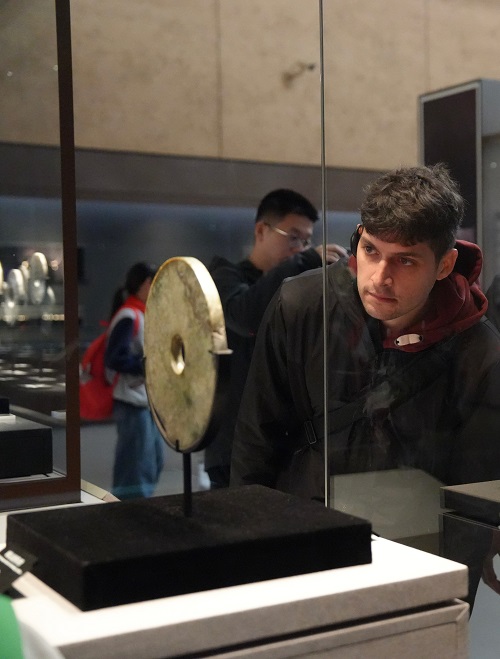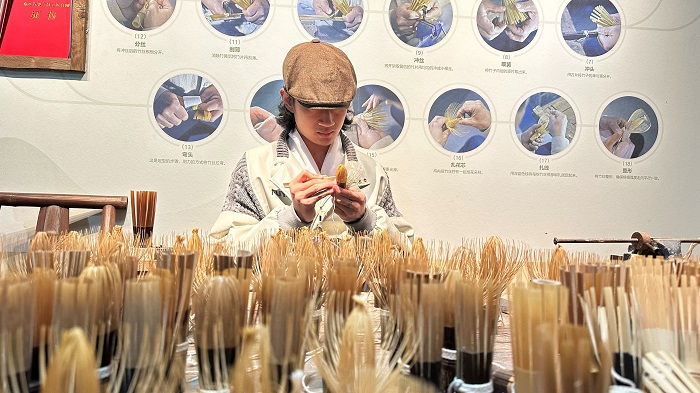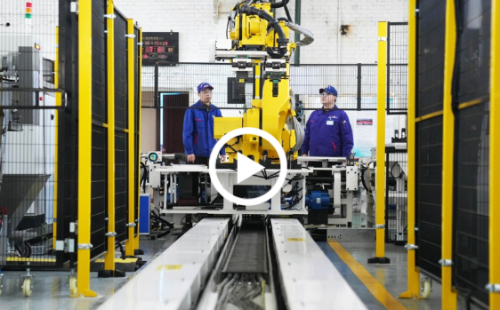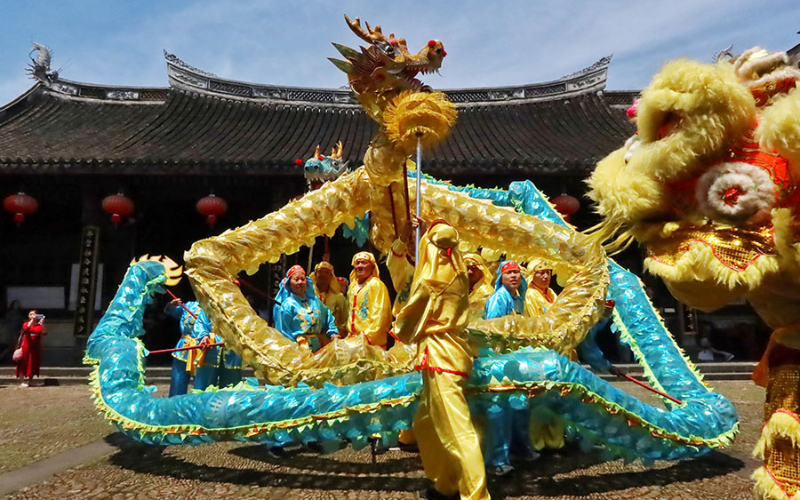Yuhang ignites wonder and awe
On April 7, I had the chance to explore the Yuhang district, northwestern outskirts of Hangzhou, the capital of Zhejiang province. With the gentle cascade of spring rain and the fragrance of cherry blossoms in the air, I set out to explore the rich history and treasures that this vibrant area has to offer.
My journey of cultural appreciation began at the Liangzhu Museum, an archaeological museum that offers a glimpse into the rich cultural heritage of Liangzhu antiquity. The museum houses an impressive collection of ancient artifacts, including stone, pottery, and jade carvings, revealing the intricate craftsmanship and artistic excellence of the Liangzhu civilization.

Author sees delicate details of the jade artifact on display.
Accompanied by a knowledgeable tour guide, I was able to explore the exact site where many Liangzhu treasures were discovered and learned that the place where my feet stood was an archaeological site dating back to around 5,300 years ago. The guide provided detailed insights into the history of the Liangzhu civilization and she explained to me how the excavation of these ruins has contributed to our understanding of ancient Chinese culture.
As I meandered through the museum, I was spellbound by the intricate designs and delicate details of the artifacts on display. Each piece seemed to whisper a story, unveiling the cultural and social customs of the Liangzhu people. It was a truly awe-inspiring experience, and I departed the museum with a deepened appreciation for the rich history and heritage of China.

Skilled craftsman creates intricate bamboo handles for oil-paper umbrellas.
As I strolled through the charming streets of Yuhang, my eyes were drawn to the fascinating Pingyao old street. I couldn't resist the urge to step inside the Yuhang Paper Umbrella Museum, where I was transported to another time and place. This museum provided me with an unforgettable hands-on experience with oil-paper umbrellas. As I stepped inside, I was greeted by the rhythmic strokes of artists working on beautiful hand-crafted paper umbrellas of all shapes and sizes. I was amazed by the level of craftsmanship that went into creating these exquisite works of art. The artists transformed sheets of paper infused with mulberry bark into stunning umbrellas painted with intricate designs and patterns. It was a mesmerizing experience that left me in awe of the skill and dedication of these talented individuals. Mesmerized by their process, I tried painting on paper umbrellas. Though clumsy, my laughter mingled with the sound of brush on paper.
With a desire to immerse myself in Chinese traditions, and what better way to do so than by exploring the ancient history of the Chinese tea ceremony in Jingshan village? As I walked into a serene tea house, the sweet and earthy aroma of Jingshan tea filled my senses. I was transported to a world of tranquility and peace. During my visit, I learned about the art of brewing tea and the deep-rooted connection it has to Chinese history and tradition. The delicate process of tea-making was a revelation, as I was able to witness firsthand the amount of care and attention put into every step of the way. It was fascinating to learn that the Jingshan leaves, carefully preserved over time, hold a special significance for the people of this village, and I was humbled to be a part of this sacred tradition.
As I bid farewell to the city of Hangzhou, my heart was overflowing with a sense of gratitude for the opportunity to experience the historical and cultural significance of Liangzhu and the warmth of shared experiences of the Hangzhou people, adding to the lasting memories of my visit. In the embrace of the city’s natural beauty and cultural heritage, I left with a profound appreciation for the ancient civilization that once thrived in this beautiful area in China.





